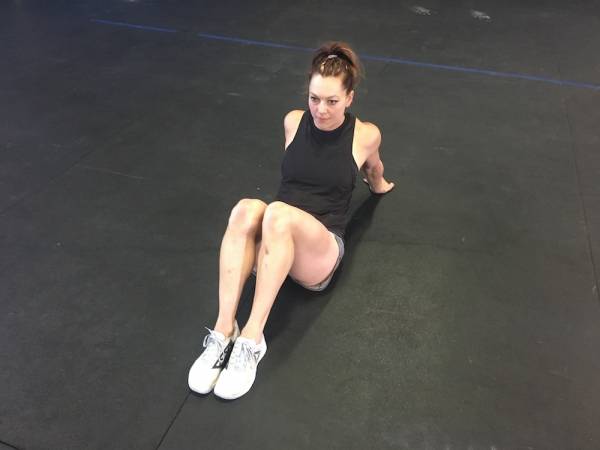How did you get injured?
I was reaching for something in the back seat of my car and heard a pop in my shoulder.
Not again!
How did you get injured?
I was reaching for something in the back seat of my car and heard a pop in my shoulder.
Not again!
Oddly enough, many of us are scared to workout because we think we’ll get injured at the gym. But we’re more likely to get injured when we least except it—usually because we’re reacting to an unexpected stimulus during, for example, a men’s hockey pick-up game or while we’re cooking in the kitchen.
If you’re an avid fitness enthusiast, you have probably been taught to focus on perfect movements all the time, like keeping your knees out when you squat. Yet in life, we get bumped and end up injuring a knee because we find ourselves twisted in a vulnerable position our joint wasn’t ready for.
All this is to say, it’s important to strengthen not just your muscles, but also your joints to prepare them for moments in life when something unexpected comes up and you end up in a less than ideal position.
Below are some simple accessory-type work exercises to help strengthen two of the most common joints we injure—the knees and shoulders.
The next time you reach for something behind you, or you get bumped in the grocery store and your leg buckles, your joints will be better equipped to withstand the blow.
Banded Knee Circles
Attach a band to a post. Face the post and put the other end of the band directly behind your knee. Take a few steps back until there’s some good tension on the band. With your foot flat, bend your knee a bit and start to rotate your knee in circles, reaching for as much range of motion in each direction as you can. Keep your hips still and your foot flat on the ground, so as to isolate the movement to just the knee.
Complete 5 slow rotations in each direction and then rotate your body 45 degrees. Repeat. Then rotate another 45 degrees and repeat. And then again. By the end, you’ll have completed 10 knee circles (5 in each direction) facing each of the four wall.
Banded Knee Extensions
A common knee injury happens when you accidentally hyperextend your knee. These banded knee extensions will help bulletproof you against these unexpected hyperextensions that can happen in sport and in life.
The set-up is similar to the banded knee circles except you’re just focusing on end range extension. The idea here is to work against the band to fully extend your knee (do this gingerly and don’t do them if you feel pain). Keep your foot flat on the ground as you bend and extend. Complete three sets of 10 on each leg.
Cuban Press for Shoulders
The Cuban press starts with a single arm high pull. Try to keep your shoulder blades down here to avoid dumping your shoulder forward, as the idea is to work your internal rotation in this part of the movement.
From the top of the high pull position, rotate your hand upward until it’s at a 90 degree angle from your elbow. Then simply press overhead like you’re doing a shoulder press. Keep your ribcage down throughout and avoid spinal extension.
Add 2 to 3 sets of 10 to the beginning or end of your training session. You probably won’t need to go heavier than a 5lb plate.
Turkish Sit-Ups for Shoulders
These are great for shoulder stability. Basically, it’s just the start of a Turkish get-up: Begin lying down with the weight pressed directly above you like the top of a floor press. Use your other arm to help sit you up all the while driving your foot (left foot if the weight is in the left hand, right foot if the weight is in the right hand). The movement ends at the top of a sit-up with your weight overhead and directly over your center of gravity.
Add 2 to 3 sets of 8 to the beginning or end of your training session.
Shoulder Extension Stretch
With a dowel behind you (touching your bum) and your hands in a supinated grip, drive the dowel away from your back as far as you can until you feel a good stretch. The idea here is to work on improving your active range of motion.
Keep these slow and controlled. The wider the grip, the more range you’ll be able to achieve. Thus, the more flexible you are, the more you’ll be able to narrow your grip.
Add 2 to 3 sets of 10 to the beginning or end of your training session.







